
Some of the most extraordinary garden ideas that I have encountered recently are Japanese gardens.
These outdoor spaces are designed to give you a peaceful place where you can relax and re-balance your Zen. It is a place for meditation, to gain inspiration, and reflect on the events of your life.
This guide is designed to show you how delightful a Japanese garden can be and give you a window of ideas that you can look through to discover new Japanese garden ideas that you can create in your own backyard.
Many of these ideas feature traditional Japanese garden aspects like Koi ponds full of fish, exotic bridges to trap evil spirits, and mysterious paths that beckon you to walk a little deeper into the garden. Before we begin exploring specific ideas, let’s take a look at some tips to help you begin creating your Japanese garden.
Utilize Existing Landscaping Features
If you are changing a traditional garden into a Japanese theme, then it may take a bit of work. If you have a waterway nearby, it may simplify creating a pond or stream, but if the landscape is already mature with plants and trees, it could make the process a more difficult one. Move rocks to the water’s edge, and use the existing greenery to create accents along the outer edge of the garden if possible. If a lot of plants are already present in the garden, then creating one that is half Japanese gardens may be more ideal than taking on the entire project at once.
Start with Simple Accents
If you do not know where to begin with your Japanese garden, you can start by removing plants that seem out of place. The idea of a Japanese garden is to create an area that’s natural and brings a sense of balance to your garden. These out of place plants can be replaced with a lantern, a subtle rockwork design, or a stone statue. If you have wood lying around that is not being used, build a bridge. You can also simply take existing shrubs and prune them in a Japanese style. In Japan, a garden is designed to last for centuries, so the pruning techniques used are extremely important to extend the life and the beauty of the Niwaki or garden trees. If you have not mastered the proper Japanese pruning techniques, Niwaki: Pruning, Training and Shaping Trees the Japanese Way has helped me master this skill.
- Utilize Bamboo in your garden. You can create a bamboo entryway, or if you prefer, you can create fences and other ornamental aspects within the garden itself.
- Moss creates the perfect ground cover in a garden of this type, especially when it surrounds a stepping stone path. Contrast is important in a Japanese garden, and this is the perfect way to subtly add some into the design.
- Intimate spaces and secluded retreats are common in Japanese gardens, so creating an island oasis that you need to access with a bridge or an area that is hidden slightly from view can be the perfect addition to your garden.
1. Koi Pond with a Waterfall

Source: Pinterest
This garden features a beautiful pond that is filled with koi. The edge of the water is lined with small shrubs and accent pieces. There is also a narrow waterfall that adds a soothing trickle to the environment.
2. Watery Oasis

If you have the space, a pond is perfect for a Japanese garden. This one gives the koi plenty of space to swim around and there are moss covered rocks throughout the area to complete the design.
3. Rock Wall of Trickling Water

This idea combines a rock wall and a waterfall to create a beautiful place for the water to trickle down into the pond. Moss can be seen on the rocks, and the wooden bridge gives you a convenient place to walk.
4. Beautiful Bird Retreat
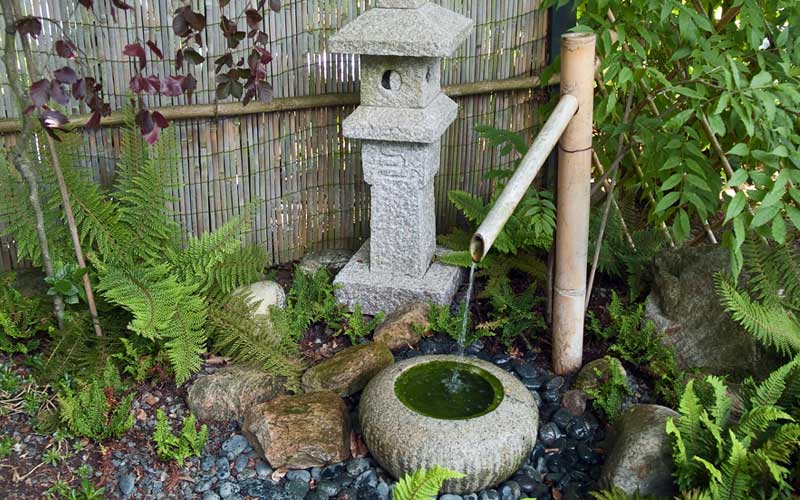
This rock birdhouse is designed to make this corner of the garden a little retreat. Bamboo is used readily here; the fence is made from it as well as the water faucet that aims the water into the hallow stone.
5. Rock Garden of Serenity
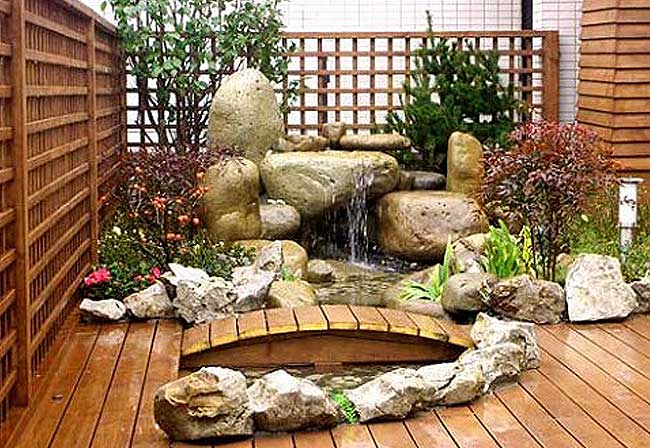
Tranquility and peace come to mind with this idea. It is a rock garden that has water falling from above to create a unique environment that would be perfect for meditation.
6. Spiritual Entrapment
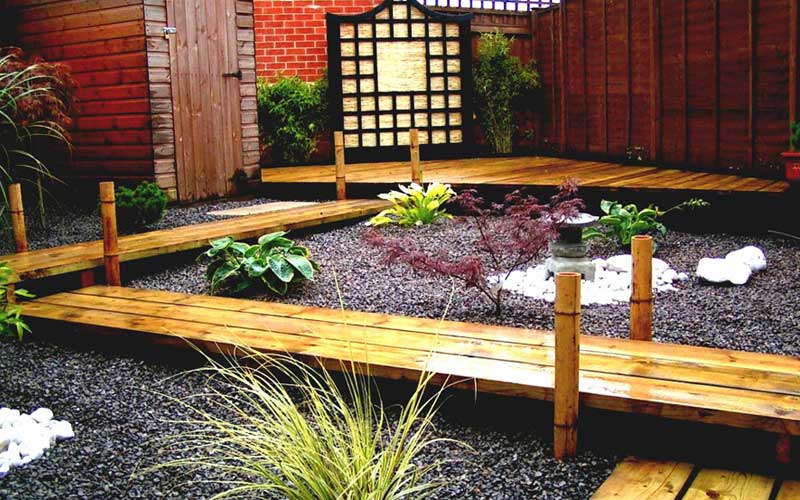
Source: The City Magazine
It is said that spirits can only walk in straight paths, so many Japanese gardens create zigzag bridges to trap evil spirits, which gives you the chance to free yourself from their grasp.
7. Secluded pond with a Rock Waterfall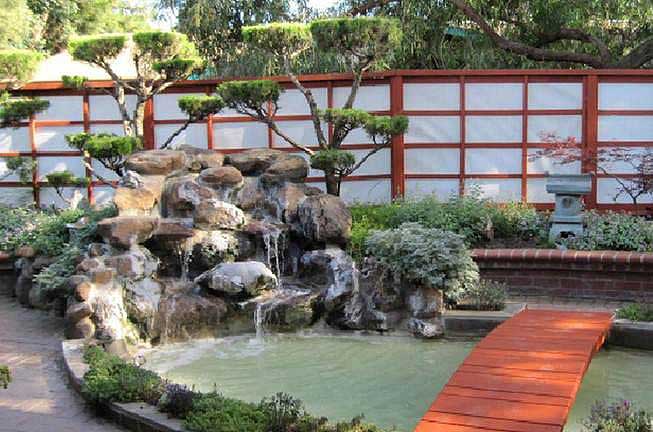
This idea utilizes rocks and water to create an intimate location where you can sit and enjoy the sounds of nature. The wall on the other side of the bridge is the perfect space to relax.
8. Rock Lover’s Garden
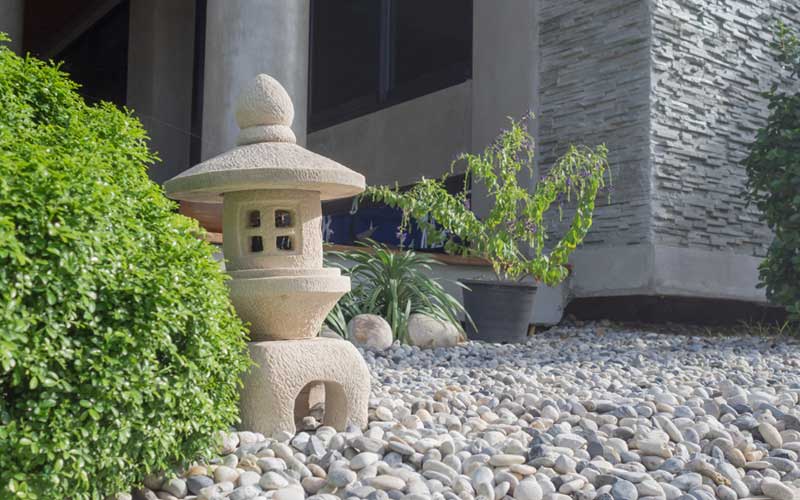
Using small stones to cover the ground in a Japanese garden is a great idea, but don’t forget to add a lot of shrubs to create a sense of contrast.
9. Whimsical and Red

This garden idea does not feature a large pond or a lot of rocks, but it does offer a small relaxing stream and a path of stepping stones that is adorable. The red accents in this garden really make the details pop.
10. Pavilion Overlooking a Shallow Pond

The first thing that catches your eye in this idea is the detailed design of the pavilion. It is located on a raised bed of rocks that overlooks a charming pond.
11. Red Bridge of Destiny

Red is often used to emphasize a feature and to give contrast to the vast amount of green that is often seen in a garden. This bridge is a welcoming feature that leads you to a more secluded area of the garden.
12. Green Garden of Delight
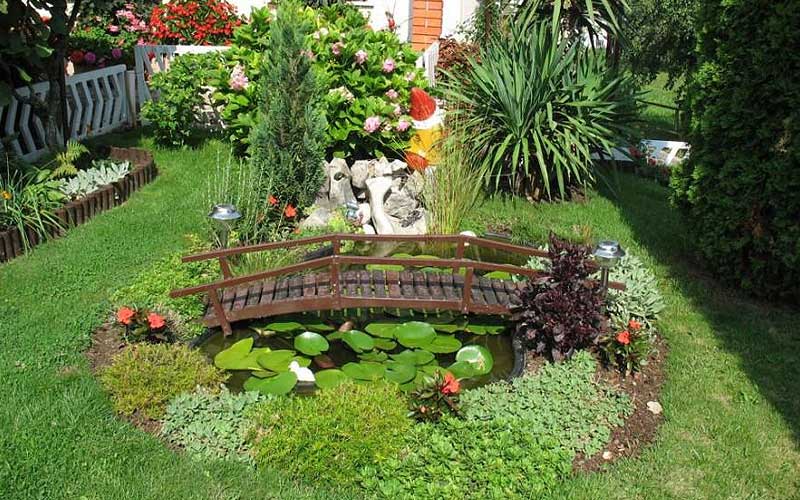
This is a great concept that can be used in a garden that already has prominent features. Having a smaller area of the garden dedicated to Japanese-style pruning and accent features means less of a transformation process will be required.
13. Pruned to Perfection

The pruning in this idea is the first thing that catches your eye. There are a few different types of plants and trees in the garden to give you a variance of colors and textures in the garden.
14. Picturesque Pavilion
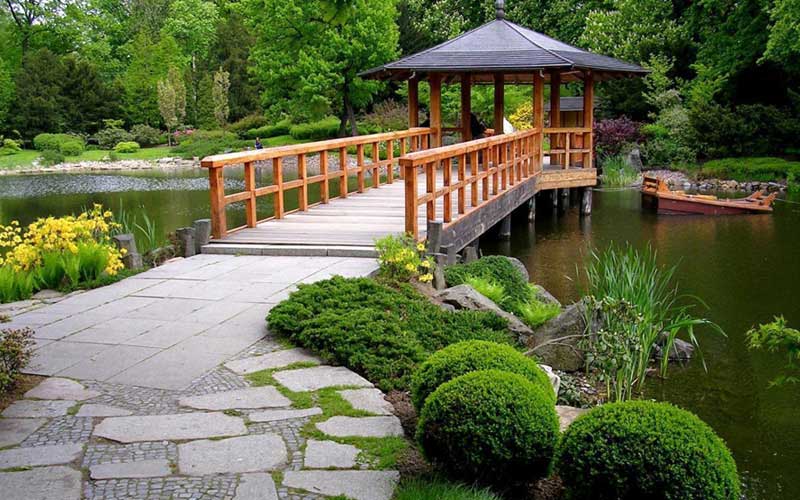
Having a location where you can go that is directly over the water is ideal in a Japanese garden. The shrubs are pruned to perfection, and the far side of the pond is vibrant.
15. Enclosed Enclave
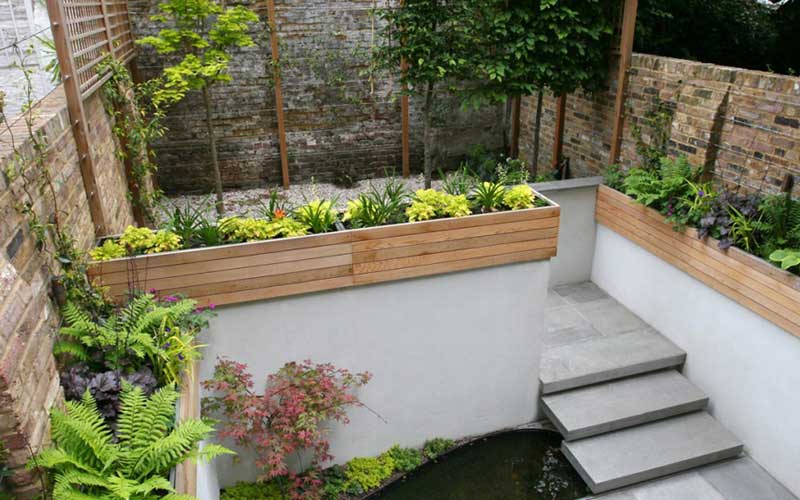
Japanese gardens typically feature secluded and enclosed spaces that make you wonder what is around the corner. This idea would be perfect with a small table and chairs in this area to provide a place to read and escape reality.
16. Stone Water Fountain and Japanese Forest Grass

Water is essential to human life and is often featured in Japanese gardens. Hakonechloa macra, also called Japanese forest grass or Hakone grass, is a perennial grass that grows rhizomes (roots). The plant loves shady areas and cannot tolerate direct sunlight. It is a beautiful perennial ornamental grass with arching, lance-shaped green or variegated leaves about 10 inches long.
17. Japanese Azaleas Highlight Traditional Stone Lantern

The stone lantern became popular in tea gardens and pathways leading to the teahouse as a functional element in the Muromachi/Momoyama period (1336 – 1600). Japonica azaleas have a strong scent and can bloom for a long time. Japonicas can also tolerate more sun than other types of azalea, making them ideal for sunny locations. Their thick leaves add contrast and texture to mixed plantings.
18. Japanese Maple and Heavenly Bamboo

Japanese maple trees and heavenly bamboo provide color and changes throughout the seasons. Nandina Domestica, also called nandina, heavenly bamboo, or sacred bamboo, is a flowering plant in the family Berberidaceae. It is native to eastern Asia and can be found in regions such as the Himalayas and Japan. In Japanese culture, the color red holds significant meanings, including zen, transformation, and wisdom.





 ?. ts.dhung.
?. ts.dhung.